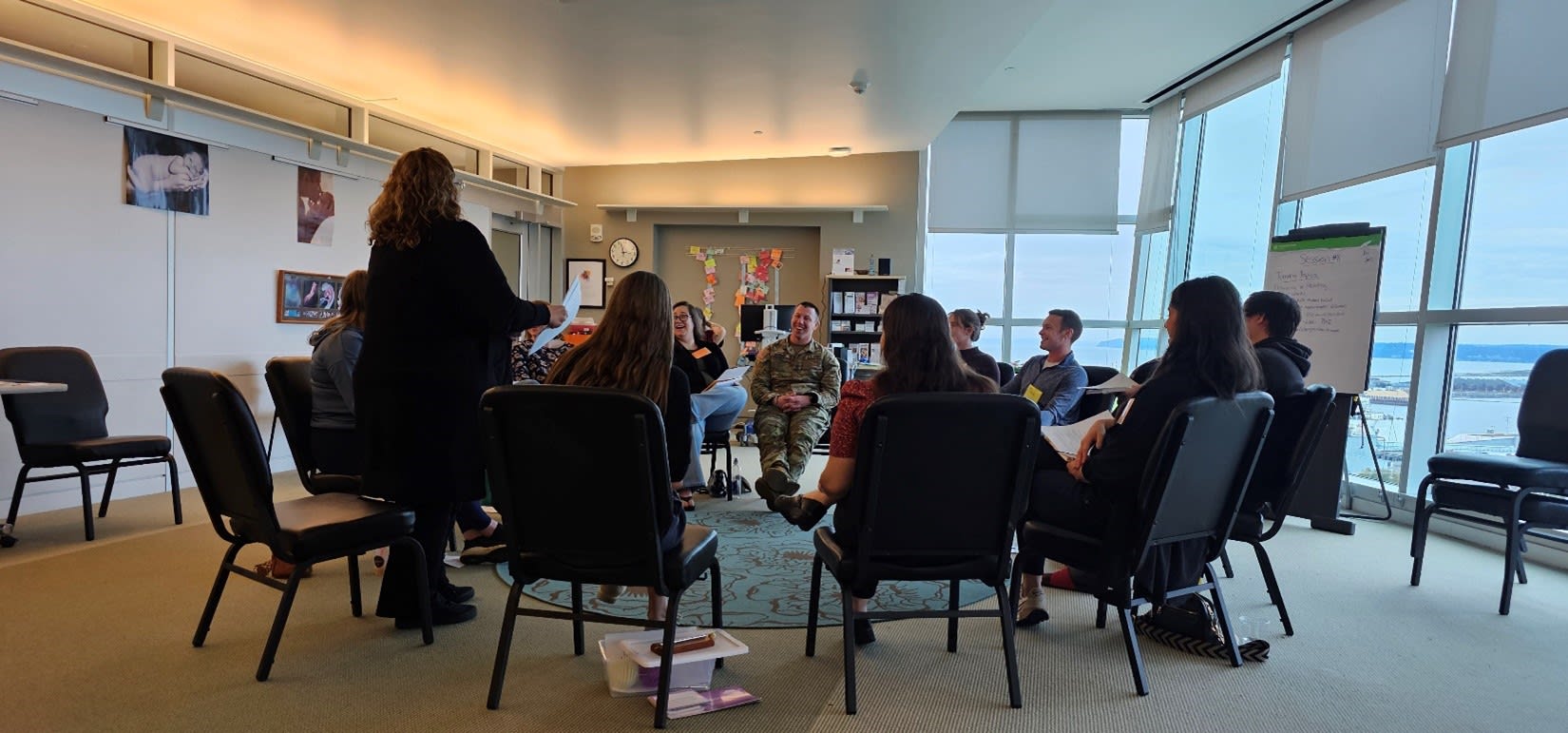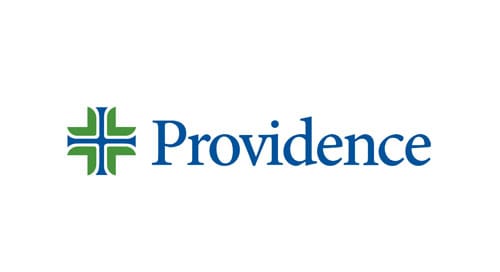Celebrating Earth Day: Providence focuses on renewable energy

[7 MIN READ]
In this article:
-
At Providence, we continue to find innovative ways to integrate sustainable energy practices.
-
We aim to reduce emissions from natural gas by 15% and reduce emissions from electricity purchases by 95% by 2030.
-
Join us as we celebrate the 55th anniversary of Earth Day, using our purchasing power to focus on renewable energy.
Celebrating Earth Day: Our Power, Our Planet
This year, Earth Day celebrates its 55th anniversary with the theme “Our Power, Our Planet,” reminding us all that we have the talent and skills to answer a global call to action to triple the world’s renewable energy by 2030. At Providence, we’re proud to be a leader in finding innovative ways to integrate sustainable energy practices in a complex industry.
Earth Day is a perfect time to share how we use renewable energy resources to combat climate change and reduce greenhouse gas emissions. The time for industry-wide transformation is here. Just as we care for our patients and communities, we must also learn how to care for our common home. One way Providence does this is by focusing on purchasing renewable energy to power our hospitals.
Energy mitigation within the WE ACT framework
Energy use contributes to 20% of our greenhouse gas emissions, and we’re dedicated to significantly reducing these emissions by 2030. Our WE ACT framework helps us organize, mobilize, track and report our initiatives, confidentially assessing our energy use.
Converting fossil fuel use to clean energy sources is lifesaving, necessary work to transform health care delivery to be safer for the climate. Geoff Glass, former senior program manager, energy and environmental stewardship for Providence, recently worked on a study of a Providence hospital that demonstrated it is possible to make the transition from fossil fuels to renewable electricity while keeping a hospital open and providing services to patients.
“The conversion could cost up to $80M over 10 years to accomplish,” Glass said. “Which is much less expensive than building a new hospital but is still a significant cost.”
In the meantime, Providence can focus on transitioning our current electricity needs to renewable sources.
An analysis of our energy needs across the organization showed that it is very difficult to generate adequate renewable energy from on-site solar systems. Installation costs can be high and would take a large surface area to provide enough electricity for even a fraction of operational electricity demands. Providence is now more focused on purchasing renewable electricity from our utility providers.
“We can procure renewable electrical energy from our utilities at a dramatically more cost-effective price than installing onsite solar power on our buildings,” Glass says. “It’s an early on mitigation measure that requires working with our utilities to purchase renewable energy certificates or RECs.”
According to the United States Environmental Protection Agency, utility companies can issue a REC when one megawatt-hour of electricity is generated and delivered to an electricity grid from a renewable energy source. Providence is teaming up with utility companies that offer RECs in various forms of renewable energy.
Exploring renewable energy at Providence
We use many renewable energy sources to meet our sustainability goals. Here are some of the kinds of renewable energy we’re using in various locations.
Solar energy
In Washington, we partner with Puget Sound Energy, which created a Green Direct program that allows users to purchase 100% of their energy through RECs.
“They built the largest solar farm in Washington state history on the east side of the Cascades,” Glass says. “That solar farm is pumping electrons into their grid, and their grid is benefitting from this renewable energy. This creates RECs that the utility company is retiring in our name. So Providence St. Peter Hospital and the Swedish Issaquah Campus utilize 100% renewable energy because of our partnership.”
At Providence, we have similar contracts in a number of our hospitals across California, Texas and Oregon.
“When we talk about renewable electricity procurement, this is really what that means,” Glass says, “We’re not the actual developer. We’re not a utility. We’re a health system working through contractual relationships with our utilities.”
Wind energy
Providence is also purchasing 100% renewable electricity by leveraging wind power.
Covenant Children’s Hospital in Lubbock, Texas, used to get its power from Lubbock Power & Light. When Texas deregulated the electricity market, we searched for a new power supplier within the Texas marketplace. Wind power represents nearly 30% of the Electric Reliability Council of Texas (ERCOT) power grid and is growing. Switching to a new electricity supplier in 2023 allowed us to purchase 100% renewable energy as RECs at a utility cost savings.
We can also utilize wind energy by signing virtual power purchase agreements (VPPAs) with developers of energy production through our partnership with Schneider Electric.
Energy developers can sell power purchase agreements (PPAs), representing power physically delivered to a building in the same grid as the utility company. When we purchase VPPAs, we’re buying renewable energy production in the form of RECs.
“There are places where we just don’t have options, like in Alaska or in some areas of California in which municipalities have a monopoly on service and supply,” Glass says. “Where we don’t have opportunities, we’re aggregating our electrical load by planning to go out to the marketplace and signing a VPPA, which are long-term deals that say, in essence, we will help underwrite your development of a wind farm or a solar farm.”
Our aim is to have all our electricity purchases backed up by RECs through an aggregated VPPA or local utility companies that directly provide electricity to us by 2030.
Hydroelectric energy
Providence also partners with local utilities to explore hydroelectric options for sustainable energy supply.
“In Washington state, about 80% of the electrical grid is produced from the Columbia River,” Glass says. “Washington has about 15 dams on the Columbia River producing power. This amazing resource was built in the ’30s or ’40s and still chugs along to this day. It’s fully depreciated and very cost-effective.”
Power grids throughout the United States are complex, interconnected, dynamic systems. When electricity gets pumped into the grid, regional grid operators determine how much of each type of electricity, whether hydroelectricity from dams or gas from plants, is used. This results in an emission factor – a value that shows how much pollution is produced from each type of electricity.
“The West Coast is now, essentially, interconnected,” Glass says. “Some parts of California can get hydroelectric power from Washington.”
Kodiak Island Medical Center in Alaska doesn’t have a natural gas power plant or a solar farm to produce electricity. But they have something even better. More than 80% of the electricity produced by Kodiak Electric Association originates from the Terror Lake hydropower facility.
“The emission factor for Kodiak Island for hydropower is very low, almost zero,” Glass says.
St. Joseph Medical Center in Polson, Montana, which sits on the Flathead Indian Reservation, also utilizes hydroelectric power.
“That Nation decided many years ago that they would not allow natural gas to run through their land,” Glass says. “They operate a large hydroelectric station that provides hydroelectric power to our medical center in Polson. We have a hospital in Seward, Alaska, in a similar situation with a big dam right next to a small town.”
Hydroelectric power is a cleaner form of energy and is fairly prevalent in the Pacific Northwest.
“It’s a fortunate coincidence to be in an area served by utilities that happen to own, operate or get all of their power from a hydroelectric source,” Glass says.
Other forms of renewable energy
Providence is also investigating the potential integration of geothermal and tidal energy within its facilities. For example, St. Patrick Hospital in Missoula, Montana, utilizes groundwater pumps buried deep in the ground to cool their buildings.
Energy audits have helped us identify and implement other energy-saving opportunities, such as LED lighting.
“On the electric side, the most cost-effective way to do energy efficiency is with LED lighting,” Glass says. “We’re doing a large scale, systemwide LED lighting project. We’re wrapping up California and Texas and ramping up in Oregon, Washington, Montana and Alaska. That will bring substantial carbon emissions reduction. That’s not RECs. That’s actual electricity not purchased and emissions not generated.”
Empowering caregivers and communities
Much of our environmental stewardship advocacy comes from promoting energy efficiency and decarbonization regulations and sharing our accumulated knowledge with caregivers, communities and health systems throughout the U.S.
“It is part of the hopes and aspirations of the Sisters of Providence that we serve as a model for stewardship work,” Glass says. “We are encouraged to share our successes.”
As lawmakers in Washington worked on the Washington Clean Buildings Act, Glass offered feedback and insights from his experience as a building operator. Through that process, he understands what’s required to meet the WA Clean Buildings Act’s calculated targets, which our larger buildings must meet in 2026.
“I help identify, budget and prioritize projects based on their returns on investment and how they will help us reach those targets,” Glass says. “We’ve been doing a lot of work in Washington to improve the energy efficiency. Our LED project will be a key feature in reducing energy use.”
Oregon recently passed energy efficiency laws that closely mirror the WA Clean Buildings Act. Working with Oregon lawmakers, Providence was able to offer lessons learned from the work we’ve done in our Washington hospitals.
“Seattle also approved an ordinance a year ago that directs commercial buildings to step down their carbon emissions gradually over time so that by 2042, they’re at net zero carbon emissions, which means that they’ve gotten to that holy grail of disconnecting their fossil fuels,” Glass says. “It’s a law, specific to the city of Seattle, that requires buildings to decarbonize their local source.”
Seattle’s electrical utilities predominantly rely on hydropower from the Cascade Range of mountains.
“The emission factor for their electricity is essentially zero,” Glass says. “To decarbonize these operations, basically the name of the game is to move to electrical sources of heating, which for hospitals is very challenging for reasons related to resiliency and reliability. We have great big diesel generators that have high emissions that run when we lose power. There are technologies coming in terms of batteries and such, but they’re not quite there yet. There are lots of technical details to think through, but Seattle is forging ahead and saying, ‘We’re going to work with you to figure those out.’”
Hospital campuses must develop a comprehensive decarbonization plan to succeed in these efforts. This is precisely what Providence is doing.
“You can’t do a chunk here and there,” Glass says. “Hospital systems tend to be these large, interconnected infrastructure systems that primarily use steam for heating and natural gas-fired boilers for creating steam. Most of our hospitals have big energy boiler plants. Those will have to go away to meet our climate commitments and to have a livable planet Earth for our kids and grandkids. It’s just going to be this massive, massive shift. Seattle is leading the way. They realize that we must do this for planetary health and for people’s health. It all comes back to health. You can’t have healthy people without a healthy planet.”
Looking ahead: Our 2030 vision
At Providence, we aim to reduce emissions from natural gas by 15% and reduce emissions from electricity by 95% by 2030. We continue to innovate and invest in renewable sources of energy and energy-efficient technologies and practices to achieve less air pollution and protect future generations.
“I’m an engineer,” Glass says. “As an engineer, I’m drawn to this work because I’m driven by continuous improvement. If I can go into a situation with a problem and find a solution that makes things better, especially in health care, that just makes me zing.”
For decades, despite our climate crisis, lawmakers believed it was OK for the health industry to be exempt from efficiency laws and regulations because there is so much at stake regarding reliability and the need to operate 24/7.
“As a guy who has been doing energy efficiency in hospitals for 40 years, I believe that’s an old concept,” Glass says. “The hospitals have been sheltered from these energy efficiency laws for quite some time. But we’re proving that it’s possible.”
This is exemplified in our LEED certifications. Providence Newberg Medical Center has been recognized as the first LEED Gold certified hospital in the country. And Providence Holy Cross Medical Center earned the first LEED Silver certification for building design and construction in Southern California.
Through our collective action and commitment, we are leading the way in navigating environmental issues within the health care industry. We know we have challenging work ahead of us, but when we look at all we have achieved, we know our power and what’s possible. We also know this work is vital.
Join us this Earth Day as we join others in an environmental movement to harness “Our Power, Our Planet” to create a sustainable future for generations to come.
Contributing caregiver
Geoff Glass, former senior program manager, energy and environmental stewardship for Providence.
Find a doctor
If you are looking for a primary care provider, you can search for one who’s right for you in our provider directory.
Download the Providence app
It’s all in the app: easily stay connected with Providence and your health. With the Providence app, you can schedule appointments, have virtual visits from the comfort of your own home, get health recommendations personalized for you, access your health records and so much more. Learn more and download the app.
Related resources
How we’re improving our energy use
Curbing carbon emissions with efficient and renewable energy
Environmental Stewardship at Providence: 2024 in Review
This information is not intended as a substitute for professional medical care. Always follow your health care professional’s instructions.



